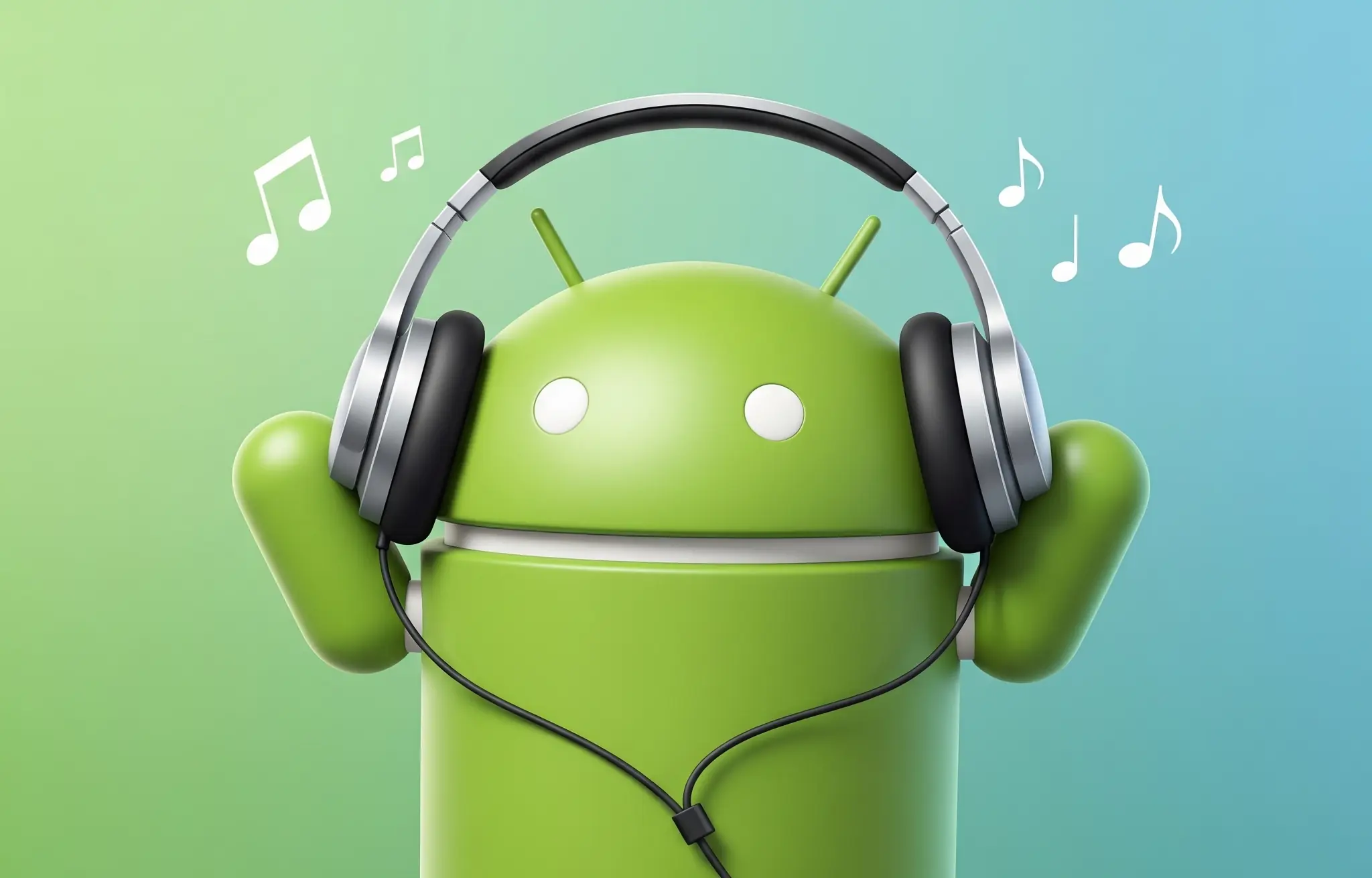httpvh://www.youtube.com/watch?v=yAZYSVr2Bhc
Så dök även SDK:n upp för Android 2.2/FroYo på developer.android.com med en tillhörande video som redogör för alla spännande nyheter.
Med FroYo följer en del förändringar även på hemskärmen, dels finns nu en ”tips-från-coachen-widget” som visar hur Android fungerar för nybörjare. Man har också lagt till genvägar för webbläsaren och nummerplattan i launchern.

Exchange-stödet är kraftigt förbättrat och till de nya funktionerna hör:
*Improved security with the addition of numeric pin or alpha-numeric password options to unlock device. Exchange administrators can enforce password policy across devices.
*Remote wipe: Exchange administrators can remotely reset the device to factory defaults to secure data in case device is lost or stolen.
*Exchange Calendars are now supported in the Calendar application.
*Auto-discovery: you just need to know your user-name and password to easily set up and sync an Exchange account (available for Exchange 2007 and higher).
*Global Address Lists look-up is now available in the Email application, enabling users to auto-complete recipient names from the directory.
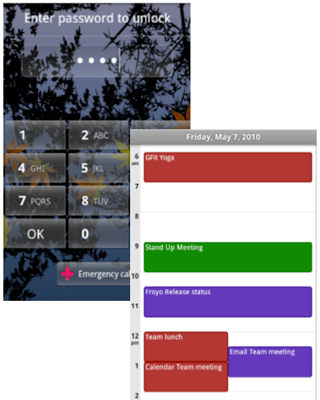
Även kamera- och gallerifunktionen är tillputsad:
*Gallery allows you to peek into picture stacks using a zoom gesture.
*Camera onscreen buttons provide easy access to a new UI for controling zoom, flash, white balance, geo-tagging, focus and exposure. Camcorder also provides an easy way to set video size/quality for MMS and YouTube.
*With the LED flash now enabled for the Camcorder, videos can be shot at night or in low light settings.

Hotspot-funktionaliteten är också en nyhet med FroYo 2.2:
*Certain devices like the Nexus One can be turned into a portable Wi-Fi hotspot that can be shared with up to 8 devices.
*You can use your Android-powered phone as a 3G connection for a Windows or Linux laptop by connecting their phone to the computer with a USB cable. The connection is then shared between the two devices.
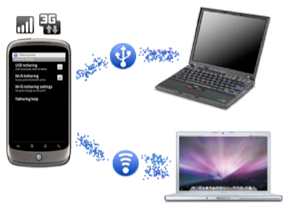
Flerspråksstöd för standardtangentbordet med möjlighet att snabbt byta både tangentbordslayout och ordlista:
Multi-lingual users can add multiple languages to the keyboard and switch between multiple Latin-based input languages by swiping across the space bar. This changes the keys as well as the auto-suggest dictionary.
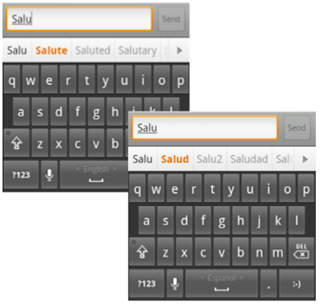
Prestandaförbättringarna gäller över hela brädet:
*Performance of the browser has been enhanced using the V8 engine, which enables faster loading of JavaScript-heavy pages.
*Dalvik Performance Boost: 2x-5x performance speedup for CPU-heavy code over Android 2.1 with Dalvik JIT.
*The graph to the right shows the performance speedup from Android 2.1 to Android 2.2 using various benchmark tests. For example, LinPack is now more than 5 times faster.
*Kernel Memory Management Boost: Improved memory reclaim by up to 20x, which results in faster app switching and smoother performance on memory-constrained devices.
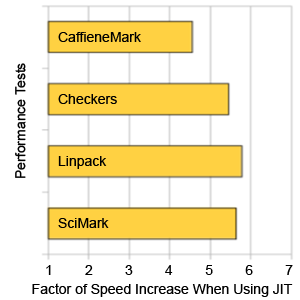
Vi hittar även en del förbättringar som inte är fullt så synliga, bland annat har man uppdaterat Linux-kerneln till versio 2.6.32 med HIGHMEM-stöd, vilket innebär att den fulla minnesmängden på exemeplvis Nexus One kommer att bli tillgänglig för användaren. Bluetooth har också blivit förbättrat med utökat stöd för fler enheter så som bilstereoapparater och headsets och dessutom kan man nu dela kontakter över Bluetooth också.
Media framework
- New media framework (Stagefright) that supports local file playback and HTTP progressive streaming
- Continued support for OpenCore in Android 2.2
Bluetooth
- Voice dialing over Bluetooth
- Ability to share contacts with other phones
- Support for Bluetooth enabled car and desk docks
- Improved compatibility matrix with car kits and headsets
2.6.32 kernel upgrade
- HIGHMEM support for RAM >256MB
- SDIO scheduling and BT improvements
Google har dessutom släppt en mängd nya API:s som man redogör för under rubriken ”New Developer API:s”. Till de riktigt stora punkterna hör databackup, apps på minneskortet och fullt stöd för OpenGL ES 2.0.
Apps on external storage
Applications can now request installation on the shared external storage (such as an SD card).
Media framework
Provides new APIs for audio focus, routing audio to SCO, and auto-scan of files to media database. Also provides APIs to let applications detect completion of sound loading and auto-pause and auto-resume audio playback.
Camera and Camcorder
New preview API doubles the frame rate from ~10FPS to ~20FPS. Camera now supports portrait orientation, zoom controls, access to exposure data, and a thumbnail utility. A new camcorder profile enables apps to determine device hardware capablities.
Graphics
New APIs for OpenGL ES 2.0, working with YUV image format, and ETC1 for texture compression.
Data backup
Apps can participate in data backup and restore, to ensure that users maintain their data after performing a factory reset or when switching devices.
Device policy manager
New device policy management APIs allow developers to write ”device administrator” applications that can control security features on the device, such as the minimum password strength, data wipe, and so on. Users can select the administrators that are enabled on their devices.
UI framework
New ”car mode” and ”night mode” controls and configurations allow applications to adjust their UI for these situations. A scale gesture detector API provides improved definition of multi-touch events. Applications can now customize the bottom strip of a TabWidget.
For more information about the new developer APIs, see the Android 2.2 version notes and the API Differences Report.
Vi hittar också en ny version av NDK:n för android (Native Development Kit), NDK r4, och till nyheterna på denna punkt hör:
General notes:
- Provides a simplified build system through the new
ndk-buildbuild command.- Adds support for easy native debugging of generated machine code on production devices through the new
ndk-gdbcommand.- Adds a new Android-specific ABI for ARM-based CPU architectures,
armeabi-v7a. The new ABI extends the existingarmeabiABI to include these CPU instruction set extensions:
- Thumb-2 instructions
- VFP hardware FPU instructions (VFPv3-D16)
- Optional support for ARM Advanced SIMD (NEON) GCC intrinsics and VFPv3-D32. Supported by devices such as Verizon Droid by Motorola, Google Nexus One, and others.
- Adds a new
cpufeaturesstatic library (with sources) that lets your app detect the host device’s CPU features at runtime. Specifically, applications can check for ARMv7-A support, as well as VFPv3-D32 and NEON support, then provide separate code paths as needed.- Adds a sample application,
hello-neon, that illustrates how to use thecpufeatureslibrary to check CPU features and then provide an optimized code path using NEON instrinsics, if supported by the CPU.- Lets you generate machine code for either or both of the instruction sets supported by the NDK. For example, you can build for both ARMv5 and ARMv7-A architectures at the same time and have everything stored to your application’s final
.apk.- To ensure that your applications are available to users only if their devices are capable of running them, Android Market now filters applications based on the instruction set information included in your application — no action is needed on your part to enable the filtering. Additionally, the Android system itself also checks your application at install time and allows the installation to continue only if the application provides a library that is compiled for the device’s CPU architecture.
- Adds support for Android 2.2, including a new stable API for accessing the pixel buffers of
Bitmapobjects from native code.


) 50
50